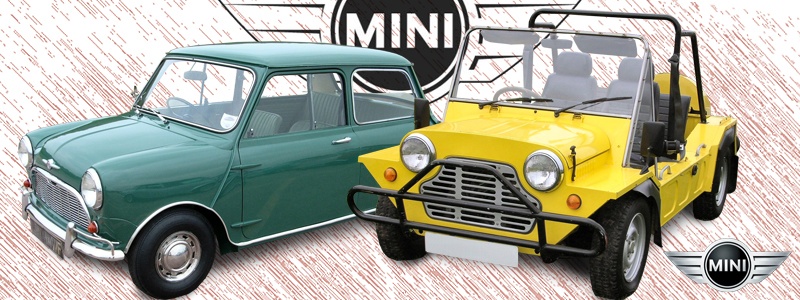An
Alec Issigonis masterpiece, the original Mini was born into a time of rising fuel prices and austere mini cars that were far from desirable. Britain in particular had been hit hard by the 1956 Suez Crisis, and the resultant reduction in oil supply led eventually to petrol rationing, something the British motorist had not suffered since the end of the war. Then head of the British Motor Corporation (BMC), Leonard Lord was far-sighted enough to realise that Britain, and indeed the world, badly needed an economical small car. Issigonis, who had been seconded back to BMC from
Alvis in 1955, was the perfect man to head up the design team, his past effort with the Morris Minor being held in high regard.
Joining Issigonis on the design team was Jack Daniels, who had worked with him on the
Morris Minor, Chris Kingham, who had been with him at
Alvis, two engineering students and four draughtsmen. The genius of the design was obviously in mounting the engine transversely and creating a
front wheel drive configuration. The reliable BMC A-Series four was used, with the
radiator being mounted at the left side of the car. The rubber cones used in the
suspension (rather than the traditional springs) were also very innovative. Designed by Issigonis's friend Alex Moulton at Moulton Developments Limited, the design allowed the wheels to be placed at the corners of the car, allowing the designers to maximise internal space. This design also afforded the Mini incredible
handling dynamics, it being arguably the first ever to offer go-cart
handling (although this was at the expense of ride quality, the Mini being rather harsh when encountering poor road surfaces.
So small were the 10” wheels that special
tyres needed to be developed by Dunlop. Some thought the sliding windows were a means of saving money, and perhaps they were right, however the designers had cleverly allowed special storage pockets to be integrated into the space that would have otherwise been used to house the winding mechanism. To ensure the Mini remained affordable, external welded seams were used on the A and C pillars, and between the body and floor pan. External hinges were also used for the boot.
During development, the engineers decided to turn the engine around, having the carburettor at the back of the engine bay rather than at the front. An extra gear needed to be placed between engine and
transmission to reverse the engine direction, however this had the added benefit of reducing loads on the gearbox and preventing the rapid wear on the
synchromesh which had been a problem on early prototypes.
Having the caburettor at the rear may have helped to reduce carburettor icing, but an unwanted side affect was that it meant the distributor had no protection from water entering through the grille, and we at
Unique Cars and Parts experienced first hand the consequences of driving a Mini in a rain storm.
Also see: Founding Fathers of the Automotive Industry - Sir Alec Issigonis



